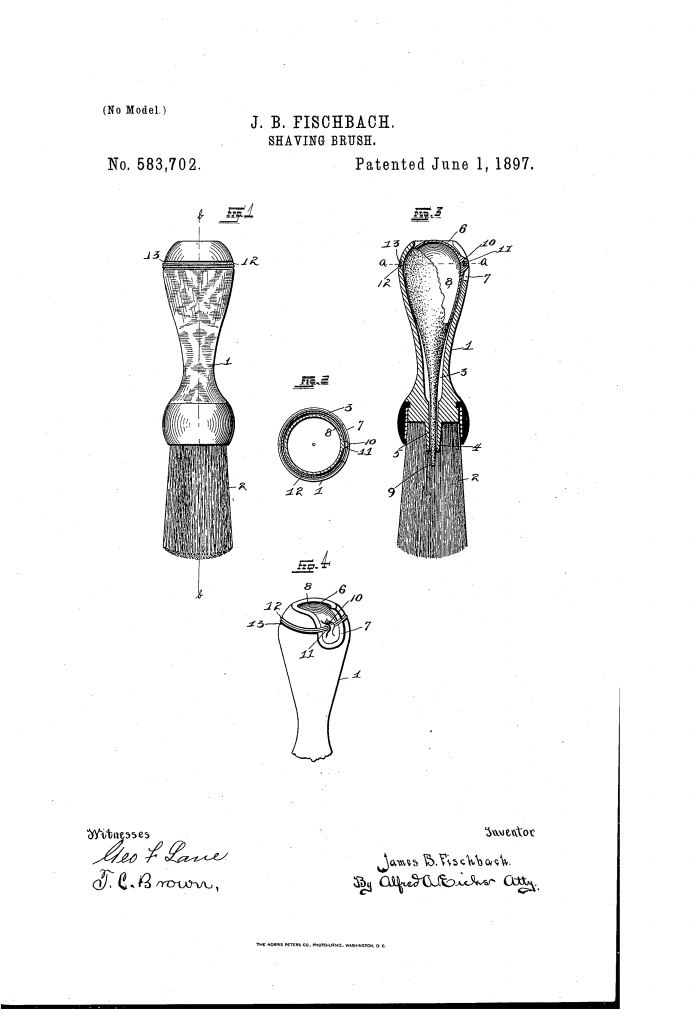The self-soaping shaving brush is not a new idea. We’ve looked at various ones from 1849 and onward up until the 1980s. But what we have today is not not a self-soaping brush – it is a self-watering brush. Although you could likely use it as a self-soaping one too, with the right liquid soap.
Most – if not all – inventions try to solve some form of problem. Some are successful. Some solve problems we no longer have. And sometimes the problem is imaginary. As to which category James B Fischbach’s self-watering brush falls in… well, let’s look at his patent.
The object of my invention is to construct a brush used for shaving purposes, and to effect certain improvements of this character whereby simple and efficient means shall be provided for forcing water into the brush and for readily controlling the flow.
It is also constructed to fill itself when said brush is placed in water, and at the same time when the brush is being used it supplies the bristles or hair of said brush with said water.
From US patent 583,702

The secret is on the inside of the otherwise normal looking brush. A rubber bulb with an elongated teat sat inside the hollow handle. The tip of the teat nestles between the hair of the knot. When a operator wants to shave, he places the brush in water as normal. And then he pushes on the bulb, expelling the air. This, in turn, makes the bulb suck water through the teat. Then, while he is lathering normally, the operator can push the bulb to squeeze some of the water into the knot to hydrate it.
Yes, I’m not sure either as to what benefit this would have. A easy way to add water to lather, but I can think of other and simpler ways to achieve it.
I think we can add the patent for the self-watering brush to the list of patents that solves imaginary problems.
As always, you can read the full patent at Google Patents.

Pingback: Self-watering brush - Razors n Blades the shave that saves